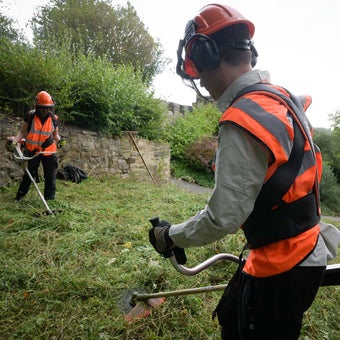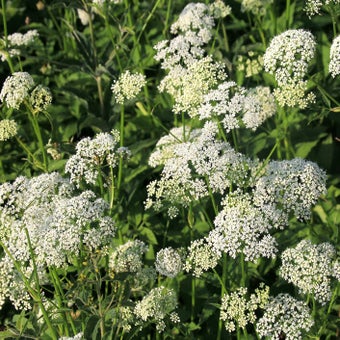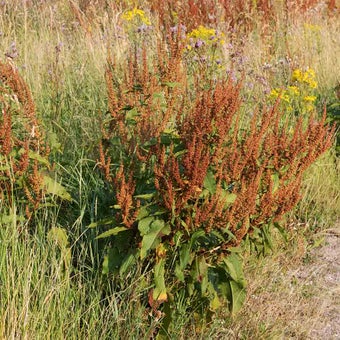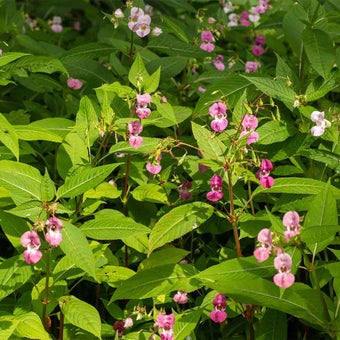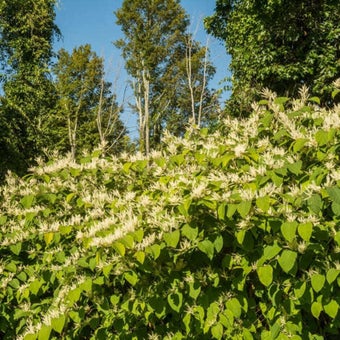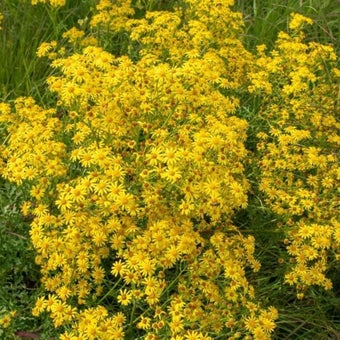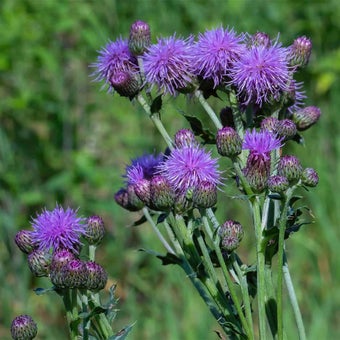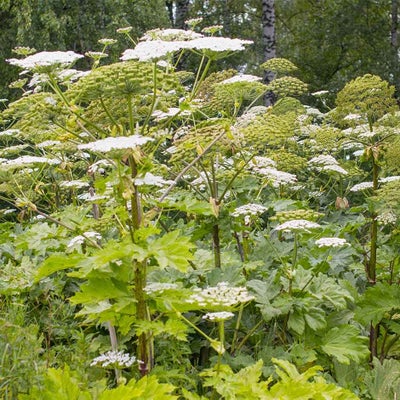
Quick facts
Giant hogweed’s botanical name is Heracleum mantegazzianum
It is an invasive non-native species found growing in a range of habitats, including riverbanks, common land, woodland margins and gardens bordering these
It is illegal to plant giant hogweed or cause it to spread, and there are restrictions on growing, cultivating, selling and transporting it
Touching giant hogweed can cause severe and long-lasting skin damage
The easiest and safest way to remove giant hogweed is to hire a professional
Giant hogweed is classified as ‘controlled waste’ and should not be added to your home compost, council green waste or general waste bin
What does giant hogweed look like?
Usually , giant hogweed forms a rosette of serrated, deeply divided green leaves in its first year. Eventually these reach up to 1.5m (5ft) wide and 3m (10ft) long. In its second year, it sends up thick, bristly, green and purple-blotched stems that are hollow inside. These can reach 5m (16ft) or more in height.
The stems hold umbels (umbrella-like clusters) of upward-facing white flowers; the umbels can be as large as 60cm (2ft) across. Flowers are followed by masses of penny-sized, paper-thin seeds with distinctive dark brown stripes. Underground, giant hogweed grows from a pale, swollen which branches as the plant matures.

At its full height, giant hogweed is not easily confused with other plants. However, in early growth, or where plants are stunted, it can be confused with other common umbelliferous plants like cow parsley and common hogweed. The former has fern-like foliage and flowers earlier in the year; the latter has more rounded leaves, no purple blotching on the stem and is smaller in stature, growing up to 2m (6ft) tall.
RHS members can send photos to the Gardening Advice service for help identifying umbels in their garden.
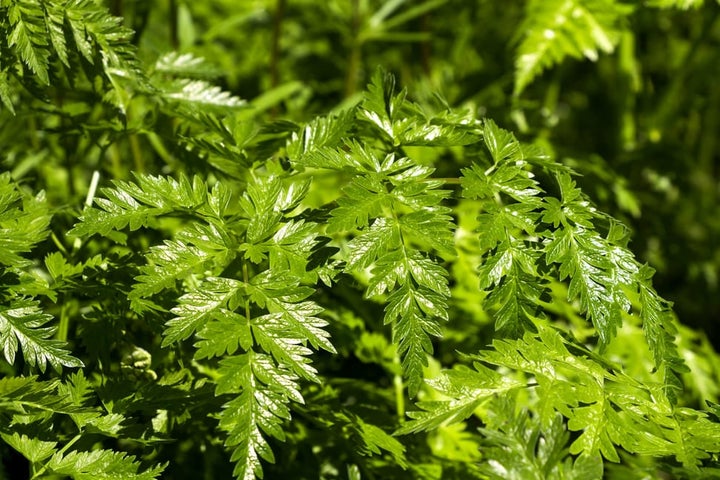
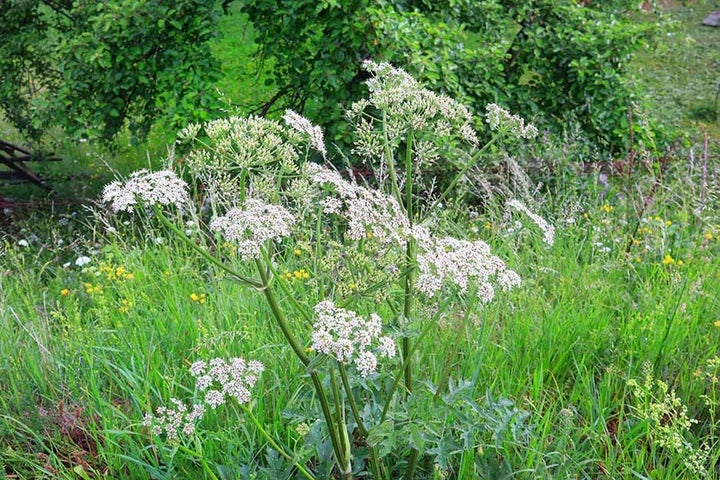
Did you know?
There are four closely related species of giant hogweed naturalised in Britain, and the botanical name Heracleum mantegazzianum is usually used for all of them. All four species look similar, but some are perennial rather than biennial.
Is giant hogweed a weed?
Owing to its fast-spreading nature and large size, giant hogweed can quickly shade and outcompete (and other) plants and is therefore considered to be a weed. It appears on the Wildlife and Countryside Act 1981, Schedule 9 list of non-native species and the Non-native Species Secretariat (NNSS) list of Species of Special Concern, meaning there are restrictions on growing, cultivating, selling and transporting it.
If giant hogweed is already growing in your garden, this is not considered an offence, though it is recommended that you control or remove it. However, you must not intentionally plant it or cause it to spread.
Aside from its invasive nature, giant hogweed poses a serious risk to human health. All four species contain high levels of furanocoumarins – chemicals which make the skin very sensitive to sunlight. Touching giant hogweed with bare skin can lead to severe photodermatitis, with symptoms including burning, blistering, pigmentation and long-lasting scarring.
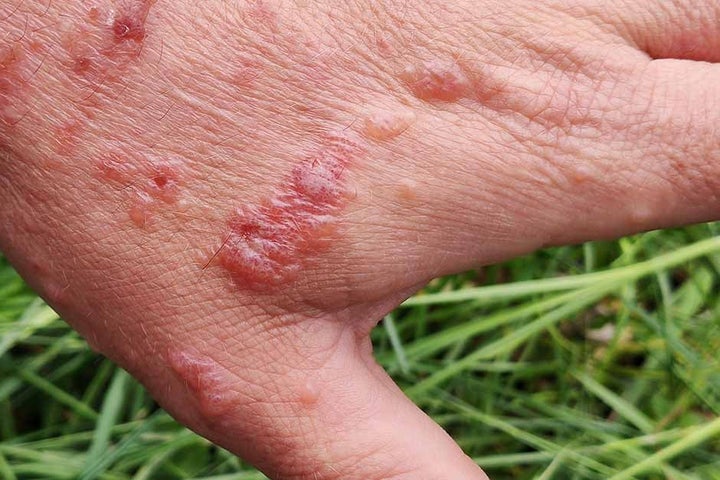
Did you know?
Giant hogweed was introduced to Britain from the Caucasus Mountains in the early 1800s and, owing to its impressive size and attractive flowers, was widely planted in ornamental gardens throughout the country. It quickly escaped cultivation and the first naturalised (wild) population was recorded just ten years later. Today it is found in every part of the British Isles.
Frequently asked questions about controlling giant hogweed
Here are our answers to your most common questions about dealing with giant hogweed.
How invasive is giant hogweed?
Giant hogweed produces masses of seed, up to 50,000 per plant, and these are dispersed over short distances by the wind and over much longer distances if they land in waterways. Gardens bordering open countryside or wasteland are most likely to find giant hogweed appearing, but seed may also be spread by soil stuck to shoes and tools.
Its seed has a high rate, and most germinate in the spring after dispersal, so plants can quickly colonise new ground. initially produce a , helping them get established quickly, and before long their large size helps them to outcompete neighbouring plants.
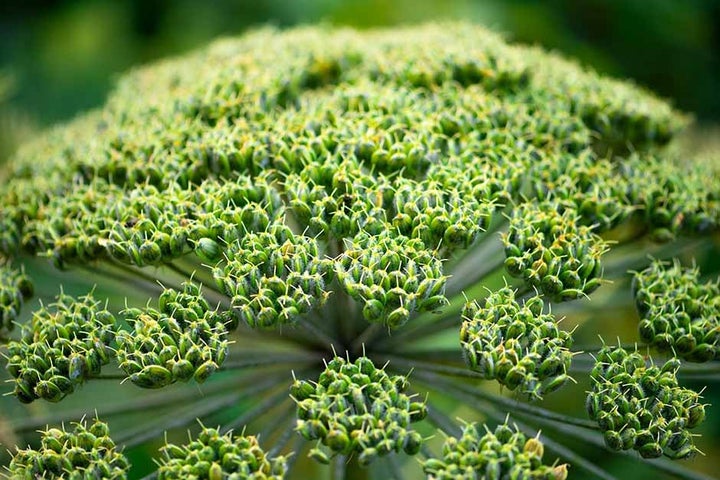
Do I need to get rid of giant hogweed?
It is not an offence to have giant hogweed growing in your garden, as long as you take steps to stop it spreading. However, as it poses a serious health risk to people and pets and can outcompete many border plants, it is good practice to remove it.
You do, however, need to remove giant hogweed if you are ordered to do so. Section 14(4A) of the Wildlife & Countryside Act enables an environmental authority to take action to enforce the control of invasive non-native species. You may be asked to enter into a species control agreement, where you agree to control or remove the plant, or served a species control order to do so. If you fail to comply with this, the environmental authority may carry out the work themselves and recover costs from you. They may also prosecute and if found guilty, landowners face imprisonment and/or a fine.
Local authorities and the police also have powers under the Anti-Social Behaviour, Crime and Policing Act (2014) to issue Community Protection Notices to landowners who are failing to control giant hogweed and who are acting unreasonably in a way that affects the quality of life of their neighbours.
What is the easiest way to kill giant hogweed?
Given how dangerous it is to handle giant hogweed, the safest way to remove it is to hire a specialist weed removal company. They will have appropriate PPE to protect themselves and are likely to be a registered waste carrier and so legally able to dispose of giant hogweed correctly (see below). The following organisations have lists of contractors who specialise in the removal of plants:
PCA (Property Care Association) Invasive Weed Control Group
Invasive Non-Native Specialists Association
The British Association of Landscape Industries (BALI)
Trustmark Government Endorsed Standards
Small populations of giant hogweed can, however, be tackled yourself. Ensure you wear gloves and cover as much skin as possible. Be aware that plant material can still cause skin damage several hours after being cut down or dug up. on clothes and tools can also cause skin damage, so handle these carefully and wash them well.
Wash any skin that touches the plant immediately, keep it out of sunlight and seek medical advice.
If tackling the removal of giant hogweed yourself, you have the following options:
- Hoe off seedlings – this is a good way to stop individual plants becoming a colony and is important if were not deadheaded in time. Hoe promptly in spring before seedlings develop their taproot and do so on a warm, dry or windy day, so exposed roots dry out quickly.
- Pull up young plants – wearing gloves, pull up plants in May once they have reached a reasonable height but before they start flowering. This is easiest if the soil is moist. For larger plants it may be necessary to loosen the soil and lever out roots using a border fork.
- promptly – allow established plants to produce a flower spike, then trim the stem down to ground level before the flowers fade. At this point, giant hogweed is less likely to survive being cut back. Bear in mind that some species are and preventing them from setting seed will not reduce populations quickly.
- Deadhead carefully – if removing plants that have already begun to set seed, cover the head with a bag before you start, to collect seeds and limit their dispersal.
How should I dispose of giant hogweed?
Giant hogweed is classified as 'controlled waste' under the Environmental Protection Act (Duty of Care) Regulations. If possible, destroy plants on site. If removal is necessary, the Environment Agency needs to be informed and you must use a registered waste carrier and an authorised disposal site. Contact the Environment Agency or your local council for information on authorised sites. If you use licensed contractors, ensure they use registered disposal sites and provide copies of waste transfer permits.
The following government websites provide more information:
Treatment and disposal of invasive non-native plants: RPS 178
How to stop invasive non-native plants from spreading
You should not add giant hogweed (and soil that may contain its roots or seeds) to your home , council or household waste bin.
Should I use weedkiller?
The RHS does not support the use of weedkillers and recommends that alternative control methods are used. However, when invasive plants are a threat to and gardeners struggle to control them with cultural methods, targeted use of regulated weedkillers may be an option. Garden centres and large retailers selling weedkillers have trained staff who can advise on suitable products for your needs.







